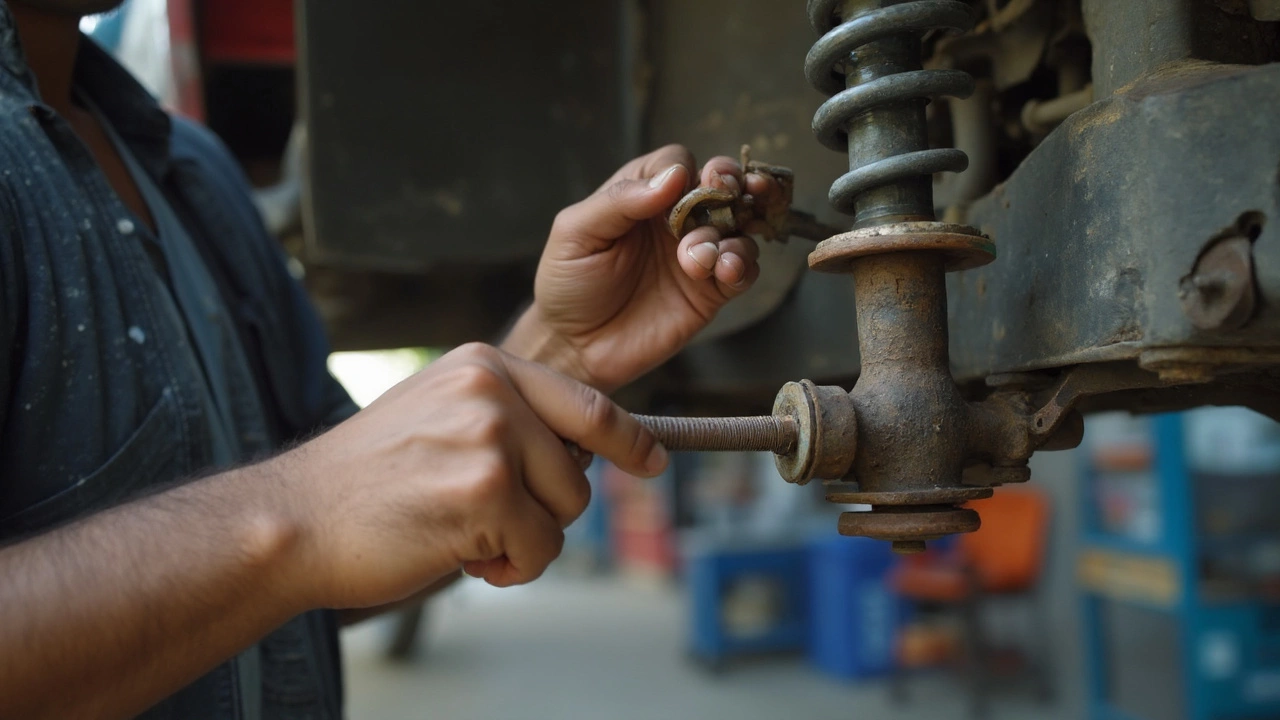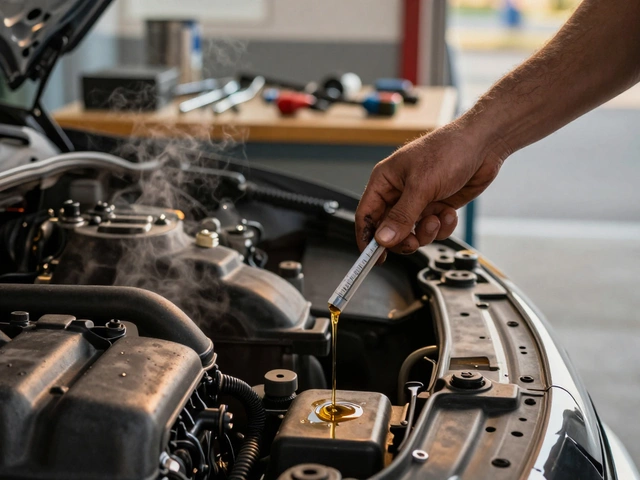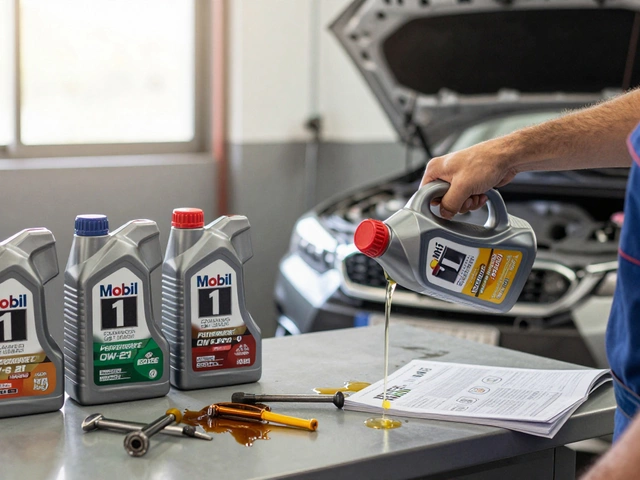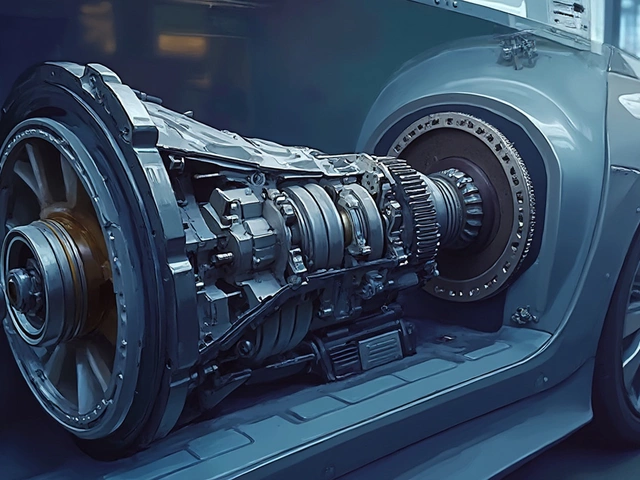If your front suspension is starting to creak, clunk, or bounce, you’re probably wondering if it's time for repairs or if you're just being paranoid. The truth is, there’s no one-size-fits-all answer for how long a front suspension should last. It’s not just about the odometer reading—your driving style, the kind of roads you tackle, and even the weather where you live all play a major role.
Some drivers get lucky and roll well past 100,000 miles without major issues, while others start noticing trouble before they even hit 50,000 miles. Potholes, speed bumps, and constant stop-start traffic wear things down way faster than smooth highway miles. Fun fact—suspension parts on cars in cities like Chicago or Detroit (where winters are tough and road salt is everywhere) tend to wear out quicker than those in Southern California.
Don't just guess. Knowing the common lifespan of key parts like shocks, struts, and bushings is one thing, but there are also clear warning signs when something needs attention. Next up, let’s break down why those numbers vary so much—and what you can watch for before your next drive turns bumpy.
- Why Front Suspension Lifespan Varies So Much
- Tell-Tale Signs Your Suspension Is Wearing Out
- Simple Ways to Make Suspension Last Longer
- When Replacement Is Non-Negotiable
Why Front Suspension Lifespan Varies So Much
It's wild how much front suspension lifespan can swing from one car to another. You'd think every vehicle would get the same mileage out of these parts, but in reality, it's all over the board. On average, most suspension components last between 50,000 and 100,000 miles, but the spread can be huge—even in cars of the same model year.
What makes the difference? First, the roads you drive on are a big deal. Hitting lots of potholes, rough gravel, or those nasty speed bumps shortens the lifespan fast. Smooth highway cruising is pretty relaxing for your suspension parts, but city streets and country backroads beat'em up. A 2023 survey by AAA found that drivers in areas with poor road maintenance had to replace suspension parts nearly 30% more often than drivers in places with smooth pavement.
Driving habits matter too. Are you an aggressive driver, braking hard and taking corners fast? That extra stress wears out shocks, struts, and bushings faster. Hauling heavy loads, towing, or plowing through deep snow? Those put even more weight and strain on the front end.
Weather is another biggie. Wet climates and lots of salt on the road will rust out suspension parts way sooner. Mechanics in northern states see way more suspension lifespan complaints than those in milder climates. And here's a quote from Robert Gordon, lead technician at CarFix Pro:
"I've seen front suspensions bite the dust at 40,000 miles in northern cities because of winter salt, while folks out west hit 120,000 miles easily. It's really about where and how you drive."
Let’s not forget about regular maintenance. Checking (and actually replacing) worn parts before things get serious can add years to your front suspension. Skipping alignments, ignoring weird noises, or using cheap replacement parts just speeds up the wear.
Just to recap how all this stacks up, here’s a look at some of the top influences on suspension lifespan:
- Road conditions (good vs. rough or potholed)
- Driving style (slow and steady vs. aggressive)
- Vehicle use (normal vs. hauling or towing heavy loads)
- Climate (dry vs. salty and wet)
- Regular maintenance and repairs
If you’re gunning for the longest life from your suspension, pay attention to these factors. They matter just as much as the number on your odometer.
Tell-Tale Signs Your Suspension Is Wearing Out
When your front suspension starts giving up, your car doesn’t hide it. It’ll send you signals—sometimes loud, sometimes subtle—that you shouldn’t ignore. Ignoring these signs can mean bigger repair bills or, worse, losing control on the road.
First, let’s talk about the classics: clunking, grinding, or creaking sounds coming from the front end. If you hear these noises when you hit bumps, turn the wheel, or go over speed bumps, that usually means bushings, ball joints, or strut mounts are on their way out. Sometimes, you’ll even feel the problem through the steering wheel as vibration or wobble.
Next, watch how your vehicle sits and moves. If one side looks lower, or your car keeps bouncing after hitting a bump, those are signs your shocks or struts are worn. Here’s a quick DIY check: park on level ground and press down hard on each front corner. If your car bounces more than once, that’s trouble.
Steering also gets sloppy when the suspension parts are worn. You might notice it pulls to one side, or the steering feels loose and unresponsive. If you need to keep correcting your path on a straight road, you’re probably dealing with worn suspension or alignment problems.
“Steering that’s not crisp or a ride that feels tough over tiny bumps is a red flag. Suspension parts aren’t just about comfort—they’re critical for controlling your car.”
—Dave Stribling, seasoned ASE-certified mechanic (quoted in Popular Mechanics, 2023)
Look at your tires too. Uneven or rapid tire wear is a solid clue. When the suspension isn’t holding things steady, tires won’t have normal contact with the road. Check for bald spots or unusual patterns.
| Symptom | Possible Cause |
|---|---|
| Car bounces after bump | Worn shocks or struts |
| Clunking noise up front | Worn ball joints/bushings |
| Pulls to one side | Bad alignment or tie rods |
| Steering feels loose | Failing suspension parts |
| Uneven tire wear | Suspension or alignment issue |
Don’t ignore these signs. Your vehicle safety depends on a healthy front suspension. Fixing things early almost always saves you money and stress down the line.

Simple Ways to Make Suspension Last Longer
If you want your front suspension to go the distance, it pays off to be proactive rather than just waiting for problems to show up. Most people are rougher on their suspension parts than they realize, but a few small changes can save hundreds or even thousands of dollars in repairs down the line.
- Slow down for potholes and rough roads. It sounds obvious, but slamming through a pothole at speed can wreck not only your suspension but also your wheels and tires. If you can’t avoid them completely, ease off the gas and roll over gently.
- Check your tire pressure regularly. Running under-inflated or over-inflated tires transfers extra stress onto your suspension. Stick to the pressure in your car’s manual—not what’s written on the tire sidewall.
- Keep up with inspections. Get your suspension looked at every time you change your oil, or at least once a year. Shops can spot worn bushings, leaky struts, or sagging springs before they turn into major headaches.
- Address noises right away. Clunks, squeaks, and rattles don’t fix themselves. The longer you ignore them, the more likely you’ll have to replace bigger (and pricier) components.
- Wash those suspension parts. If you live somewhere with snowy winters or salty air, a quick rinse under the car a couple times a month can prevent rust from chewing up your suspension faster than it should.
Here’s a quick look at how these habits can extend the lifespan of your front suspension:
| Habit | Potential Suspension Lifespan Boost |
|---|---|
| Slowing down for bumps | Up to 20% longer lifespan |
| Maintaining proper tire pressure | Helps preserve even wear on parts |
| Regular inspections | Early detection can stop chain-damage |
| Washing off salt/grime | Prevents rust and corrosion-related failures |
These aren’t just “nice to have” tips—drivers who follow these steps see fewer surprise repairs and much longer lives for their suspension components. If the road feels smooth, your wallet does too.
When Replacement Is Non-Negotiable
Sometimes there’s no point hoping your front suspension will magically get better. If you spot certain issues, replacement isn’t just a suggestion—it’s a must. Safety and the health of your whole vehicle are at stake.
You can’t put off a suspension swap if any of these show up:
- Fluid leaks from your shocks or struts. The second these seals blow and fluid starts dripping, it's game over. Leaking means your suspension parts can't cushion bumps or keep tires planted, so handling goes south fast.
- Visible damage or major rust. If you can see a bent control arm, cracked spring, or bushings that look mangled, that part isn’t doing its job anymore. Extreme corrosion around mounting points is also a big red flag, especially if you live where salt eats metal.
- Failed bounce test. Push down hard on your car's front end, let go, and count how many times it bounces. More than 2-3 bounces? Your shocks or struts are toast. You want your car to settle quickly, not bounce around like a basketball.
- Uneven tire wear. If your tires look shredded on one edge or clearly wear out in odd patterns, your front suspension probably isn’t keeping things aligned. No amount of tire rotation fixes this until you sort the real problem.
- Swaying, nose-diving, or “floaty” handling. If the car dips nose-first on braking, rolls side-to-side on turns, or just feels squishy, key suspension parts have likely failed. Hard stops and sharp corners shouldn’t feel like a carnival ride.
The facts don’t lie: ignoring this stuff can lead to bigger headaches. The National Highway Traffic Safety Administration points out that bad suspension is a factor in thousands of accidents every year. Here’s a quick look at how some of the main suspension parts stack up in terms of mileage:
| Suspension Part | Average Lifespan (Miles) |
|---|---|
| Shocks/Struts | 50,000 - 100,000 |
| Ball Joints | 70,000 - 150,000 |
| Bushings | 40,000 - 100,000 |
| Control Arms | 90,000 - 100,000 |
Of course, if you drive hard, haul loads, or hit a lot of potholes, these numbers could drop fast. The bottom line: Notice any of the signs above? Don’t wait. Get those suspension parts checked out and replaced if needed. Your car, your comfort, and your wallet will thank you later.











Write a comment